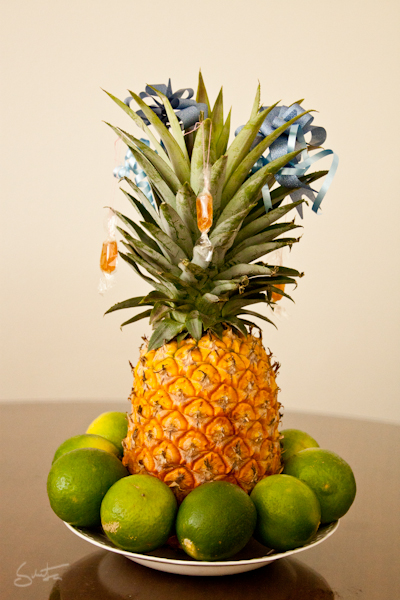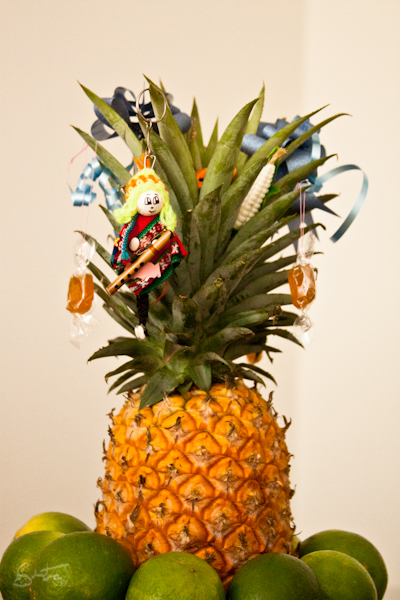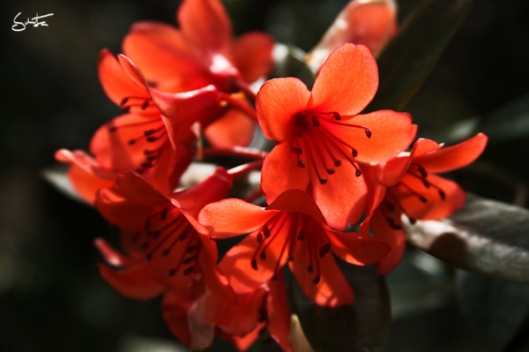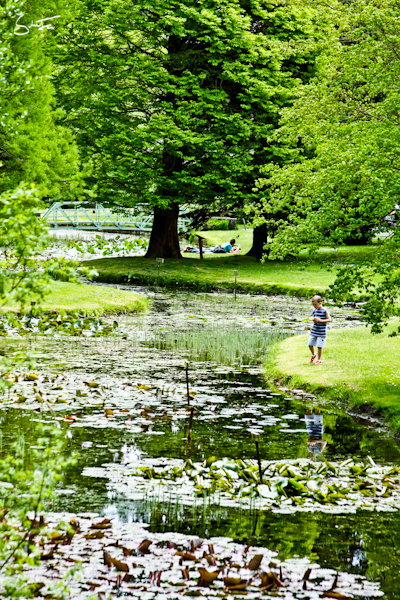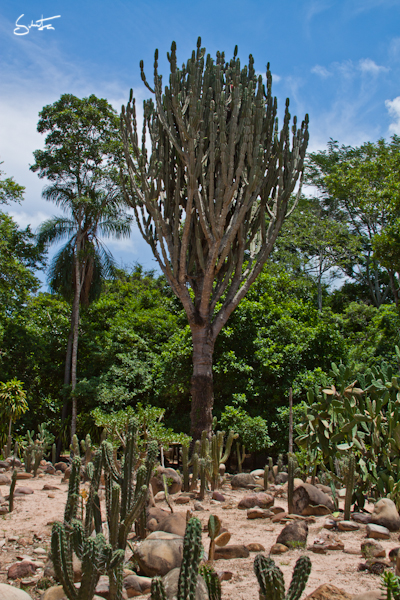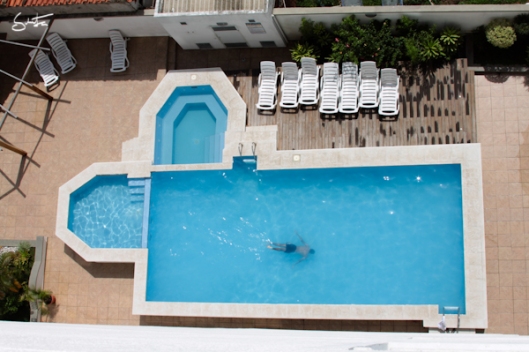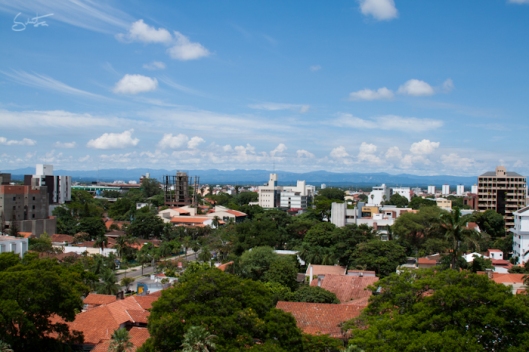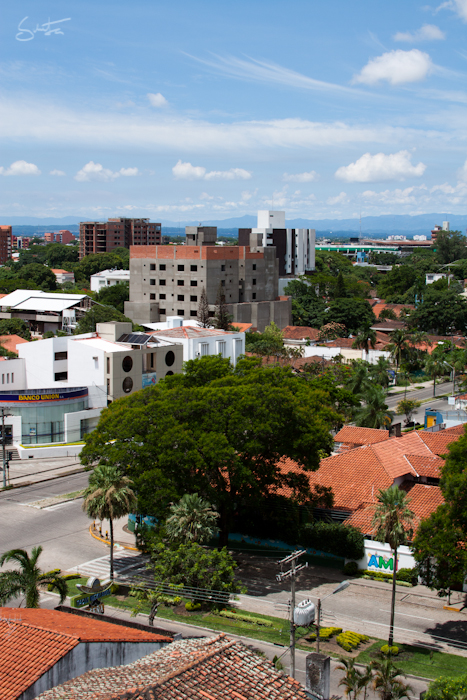Boliwia jest krajem niezwykle zasobnym – zarowno w niezwykle krajobrazy, surowce mineralne, jak i …. przepyszne warzywa i owoce! Nie jestem wielbicielka kuchni boliwijskiej, jednak pewne dania przypadly mi do gustu:
‘Silpancho’– taki nasz schabowy podany z ryzem, ziemniakami, jajkiem i surowka z pomidorow i cebuli.
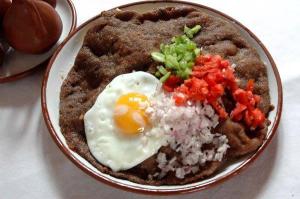
‘Picante de polio’ – czyli kurczak w pikantnym czerwonym sosie.
‘Sopa da mani’ – zupa z orzeszkow ziemnych, podawana z makaronem i drobno posiekanymi ziolami.
Sa tez tradycyjne dania boliwijskie, ktore omijam szerokim lukiem:
‘Chicharon’ – czyli zeberka w czosnku i oregano, gotowane i smazone we wlasnym tluszczu, serwowany z ‘mote‘ (kukurydza), bialym niepasteryzowanym serem ‘quesillo’ (po zjedzeniu ktorego zawsze choruje) oraz ‘llajwa‘, zimnym sosem z chilli (locoto). Na zdjeciu widoczne sa tez suszone ziemniaki chuños, ktore produkowane sa w La Paz. Chaarkteryzuja sie tym, ze nie ma w nich ani kropli soku – tutaj jest to przysmak.
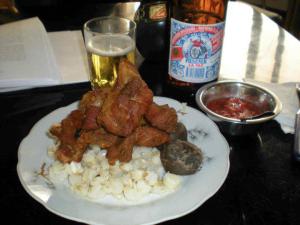
‘Charque’ – czyli suszone mieso serwowane z mote, ziemniakiem w lupinie i calym jajkiem. Przyprawiane llajwa.

‘Fricase’ – sama nie wiem dokladnie co to jest.
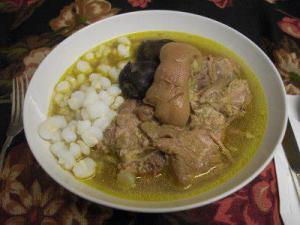
fot. https://www.facebook.com/mibellabolivia
Oprocz tego mialam okazje sprobowac smazonych jezykow wolowych (sam widok nie jest przyjemny, ale smak moze byc, mimo dziwnej tekstury) czy grilowanego wymiona krowiego (bez komentarza).
Sami Cochabambinos mowia, ze tutaj czlowiek chce zjesc przede wszyskim DUZO, szczegolnie miesa, i tanio.
Malo brakowalo, a zostalibysmy wegetarianami, jedzacymi tylko kurczaka (w Boliwii kurczak nie jest uwazany za mieso). Poza tym, ile razy kupilismy inne mieso, zawsze okazywalo sie ono twarde i zylaste (choc musze przyznac, ze pieskom z ulicy smakowalo). Ograniczylismy sie wiec tylko do kurczaka i wieprzowiny, ktora przechodzi test zucia:)
Pamietam rowniez jakim szokiem bylo dla mnie to, ze do zupy z kurczaka musielismy uzyc noza…Pomijam kurczaka, ktorego wszedzie mozna jesc palcami, ale tutaj nawet marchewke i ziemniaka podaje sie czesto w jednym kawalku.
Trzeba sie wiec niezle napracowac, zeby zjesc obiad po boliwijsku:)
Ja osobiscie przyzwyczajona jestem raczej do ziemniakow gotowanych na miekko, schabowego rozplywajacego sie w ustach, polanych szczodra iloscia sosu pieczarkowego lub innego, z pyszna surowka z kapusty i marchewki lub mizeria. Proste, przyjemne i nie trzeba uzywac palcow podczas jedzenia:) Poza tym razem z F. lubimy kuchnie wloska, indyjska, tajska, meksykanska a nawet irlandzka (odpowiednio przyprawiona).
Bazujac na tych smakach, jak i naszych utartych juz preferencjach kulinarnych, sami przygotowujemy dania, korzystajac z urodzaju swiezych warzyw z pobliskiego targu. Grzechem byloby z tego nie skorzystac!
Oto kilka z nich:
‘Barszcz bolowijski’ – gotowany na kosci (lub z dodatkiem kielbasy prawie-polskiej); buraczki, ziemniak, marchewka w kostke, fasola jas i szpinak:) Zaprawiany octem jablkowym, doprawiony sola, pieprzem, locoto i oczywiscie majerankiem, ktory udalo mi sie znalezc w supermarkecie.
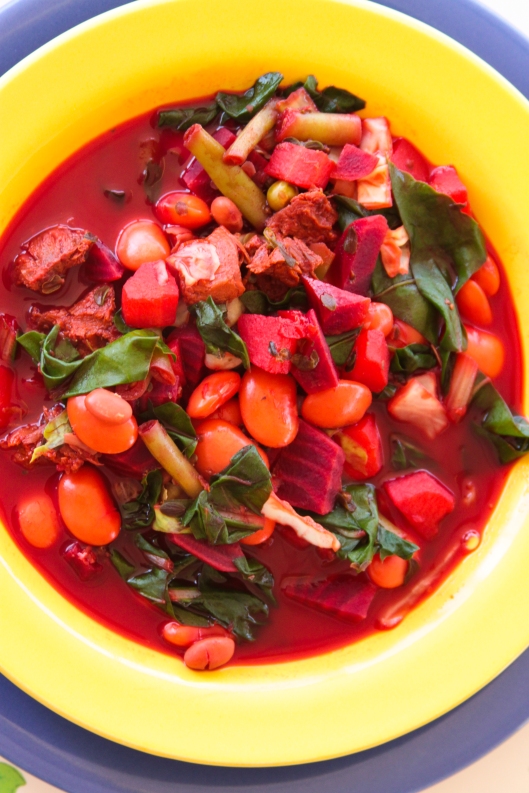
‘Zupa jarzynowa’ – skladajaca sie ze wszystkich warzyw, ktore mamy w lodowce i zaprawiona przecierem pomidorowym. Mozna dodac kurczaka – my zwykle przygotowujemy go osobno w piekarniku, w panierce ziolowo- czosnkowej.
‘Zupa ‘krem’ marchewkowa’ – z dodatkiem locoto, czosnku i curry. Podawana z kurczakiem z piekarnika w ziolach.
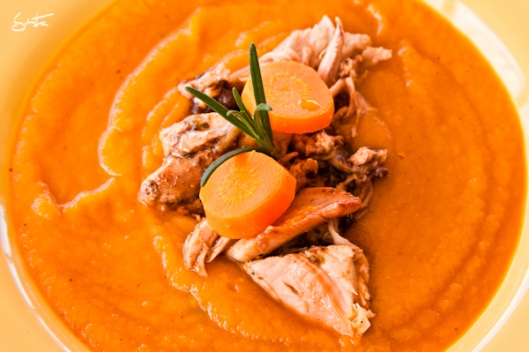
‘Wraps‘ – kurczak, papryka, cebula, czerwona fasolka i kukurydza z puszki – posiekane i podsmazone razem z dodatkiem kuminu oraz spora iloscia locoto; gotowane w sosie pomidorowym. Podawane w tortiji z salatka pomidorowa na boku.
‘Stir-fry’ ze szpinakiem (ktorego nigdy wczesniej nie jadlam), marchewka, papryka, brokolami, kapusta, zielona fasolka, czarna fasolka (z puszki), doprawione locoto i sosem sojowym. Pycha! Serwowane z ryzem i gotowanym z groszkiem (lub chinskim makaronem, ktory mozna kupic w supermarkecie za grosze). Taki mix chinsko – indyjski, stworzony z produktow ‘made in Bolivia’:)

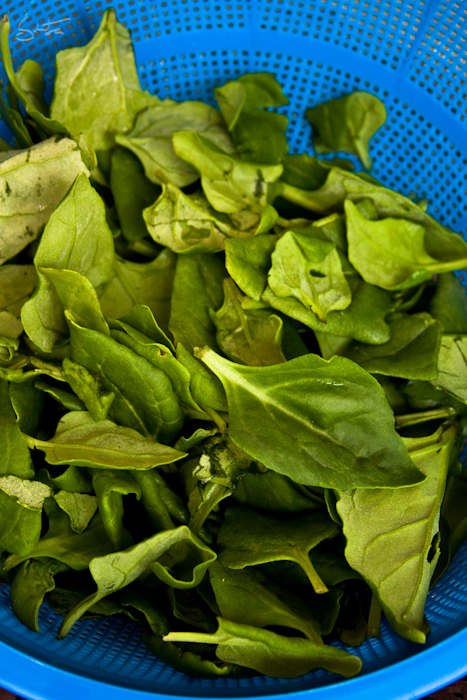
‘Chicken Tikka Masala’ – z dodatkiem ugotowanej marchewki w kostke lub zielonej fasolki. Do tego nasza mizeria z jogurtem zamiast smietany.
‘Spaghetti bolognese’ – tu w zasadzie jedyna zmiana w przepisie tradycyjnym jest ddatek ostrego locoto (a jakze!).
‘Pasta carbonara’ – mamy swoj przepis, ale calosc raczej tradycyjna. Obowiazkowo z pomidorami w oliwie z oliwek i occie balsamicznym, posypanymi ziolami wloskimi.

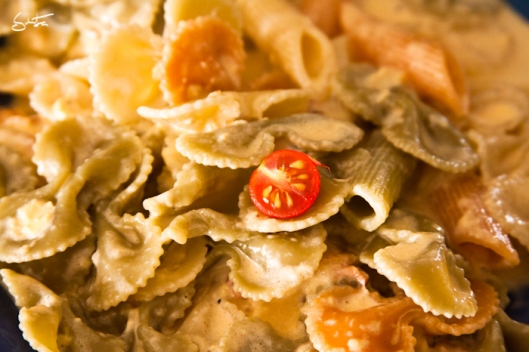
‘Zapiekane oberzyny’ – czasem z miesem mielonym a la bolognese czasem bez; z pomidorami i serem typu mozarella oraz czosnkiem, przyprawiane ziolami.
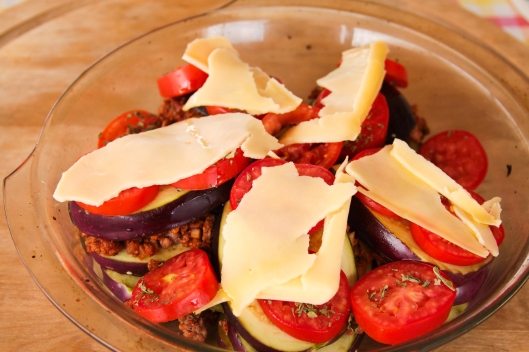
‘Omlet a la Fred’ – ktory wyglada jak pizza ale smakuje jak omlet:)
Czasem jemy rowniez kawalki wieprzowiny, przyzadzanej a la ‘steak’, podsmazany z cebula, do tego puree ziemniaczano – marchewkowe i zasmazana z locoto zielona fasolka w panierce. Czasem surowka w zalewie octowej ze sloiczka, kupiona w supermarkecie (produkcji boliwijskiej, ale wedlug przepisu niemieckiego ‘Dillman’).
Na lunch, na szybko, podsmazamy cebulke z papryka i kawalkami szynki (lub bez), ukladamy pomiedzy dwiema tortijami i wkladamy do piekarnika. Taka ‘pseudo-pizze’ podajemy z ketchupem.
Przyznam, ze nigdy tak dobrze sie nie odzywialam (pomijajac domowe obiadki mamy i taty) – a to dlatego, ze ceny warzyw w Europie sa o wiele wyzsze niz tutaj. Poza tym – inny smak! Jak jeszcze dodamy do tego dania z quinoa, to otrzymamy menu doskonale.
Ale o tym innym razem.
***
Bolivia is wealthy in an amazing landscapes, minerals and …. delicious fruits and vegetables! I am not a big fan of Bolivian cuisine, but I grown to like some of the dishes:
‘Silpancho’– flat big piece of meat served with rice, potatoes, poached egg and tomato salad with onion.
“Picante de polio ‘-chicken in a spicy red sauce served with rice and full potato.
‘Sopa da mani’ – peanut soup served with noodles and finely chopped herbs.
There are other traditional Bolivian dishes, which I, however, will take a pass on:
‘Charque’ – dried meat served with mote (kind of white big corn), potatoes and whole shelled egg with llajwa (cold sauce made of locoto – chilli).
‘Chicharon’ – a rib eye with garlic and oregano, cooked and then fried in its own fat, served with mote, potatoes in their skins, whole egg and llajwa.
‘Fricase’ – I don’t even know what that is.
Apart from that, I had a chance to try fried beef tongue (the sight of it was not pleasant, but the taste good – despite strange texture) or grilled cow udders (no comments).
We were very close to become vegetarians, who eat only chicken (chicken in Bolivia is not considered to be a meat). Besides, how many times we bought other meat, it always turned out tough and chewy (although I have to admit, doggies from the street liked it a lot). So we limited ourselves only to chicken and pork, which passes the ‘chewy’ test :)
Cochabambinos themselves say that here a man wants to eat A LOT, especially meat, and cheap.
I remember also what a shock it was to me that we had to eat chicken soup with the knife! I omit the chicken, which you can eat with your fingers everywhere, but here even the carrot and potato are served in one piece.
Therefore, you have to work hard eating Bolivian dinner :)
Myself, I’m more accustomed to the softly cooked potatoes, meat that melts in your mouth, topped with generous amount of mushroom sauce, with a delicious salad made of cabbage and carrot or cucumber. Simple, tasty and not need to use your fingers while eating :) Besides F. and I like Italian, Indian, Thai, Mexican and even Irish cosine.
Based on these flavors, as well as our culinary preferences, we prepare our own dishes using fresh vegetables from the nearby market. It would be a sin not to take advantage of having such a supply!
Here are some of them:
“Stir-fry” with spinach, carrots, peppers, brocolli, cabbage, green beans, black beans (canned), flavored with soy sauce and locoto. Served with rice cooked with peas (or rice noodles bought in a supermarket at a very reasonable price). Such a mix of Chinese – Indian from products ‘made in Bolivia’ :)
‘Chicken Tikka Masala’ – with the addition of cooked carrots or green beans. Served with cucumber salad with yogurt.
‘Bolivian borsch’ – cooked on the bone (or with the addition of almost- like – Polish sausage), beetroots, potatoes, carrots, beans and spinach; some apple vinegar, seasoned with salt, pepper, marjoram (which I eventually managed to find in the supermarket) and locoto, of course.
‘Vegetable soup’ – consisting of all the vegetables found in the refrigerator and cooked with tomato paste. You can add chicken – we usually prepare it separately in the oven, in herb-garlic seasoning.
‘Wraps’ – chicken, peppers, onions, red beans and canned corn – sliced and fried with cumin and the large amounts of locoto, cooked in tomato sauce. Served in tortilja and tomato salad on the side.
‘Spaghetti bolognese’ – here, in fact the only change in a traditional recipe is a acute addition of locoto.
‘Pasta Carbonara’ – we have it our way, but a whole is rather traditional. Served with tomatoes in olive oil and balsamic vinegar. Sprinkled with Italian herbs (grown in Bolivia:)
‘Cream ‘carrot’ soup’ – with locoto, garlic and curry. Served with chicken from the oven with herbs.
‘Baked aubergine”- sometimes with minced meat a la Bolognese sometimes without, with tomatoes and mozzarella cheese, olive oil; spiced with herbs.
‘Omelette a la Fred’ – looks like a pizza but tastes like an omelet :)
Sometimes we also eat bits of pork a la ‘steak’, fried with onion, mashed potato- carrots and fried green beans with locoto in breadcrumbs. Sometimes I eat salad in vinegar from the jar, bought in a supermarket (produced by Bolivian own ‘Dillman’ according to a German recipe. Tastes almost like Polish one:).
For quick lunch – fried onion, red pepper and slices of ham (or without), placed between the two tortillas and put in the oven for a couple of minutes. It is a kind of a ‘pseudo-pizza’ served with ketchup.
I admit that I have never ate so well in my life (except for home dinners of mom and dad) – and it is because vegetable prices in Europe are much higher than here. Besides – a different flavor! If we add to this some dishes with quinoa, we get a SUPER menu.
But more on that another time.
00
